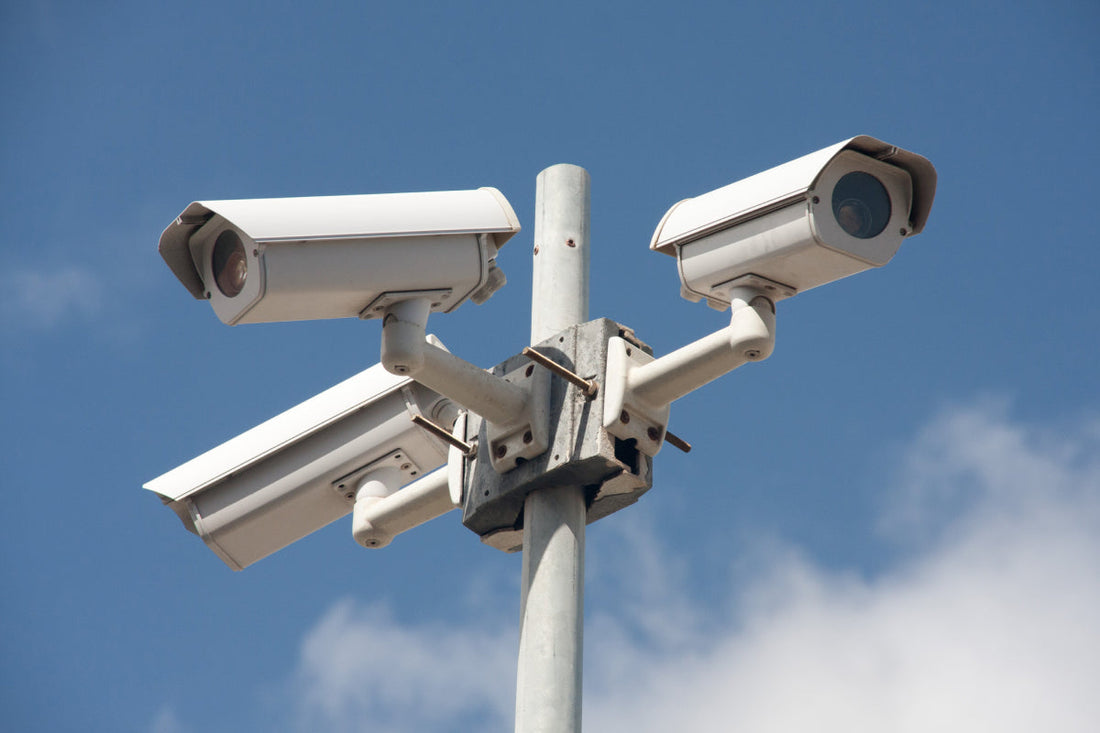
Understanding and Optimizing CCTV Camera Coverage Distance and range
Share
CCTV Camera Reach : How to Calculate and Maximize Surveillance Coverage
When planning a surveillance system, one of the most common questions people ask is: “How far can a CCTV camera see?” Understanding CCTV camera coverage distance is crucial for placing cameras strategically, ensuring optimal performance, and avoiding blind spots. In this blog post, we’ll dive deep into the factors that influence CCTV camera coverage, how to calculate viewing distances, and practical tips for maximizing effectiveness.
What is CCTV Camera Coverage Distance?
CCTV camera coverage distance refers to how far a camera can clearly view and record an area while maintaining usable image quality. This distance can vary significantly based on several factors, including lens type, resolution, sensor size, lighting conditions, and whether the camera is used during the day or at night.
Key Factors Influencing Coverage Distance
1. Lens Type and Focal Length
The lens focal length (measured in millimeters) plays a major role in determining the field of view and the distance a camera can see.
• Wide-angle lenses (2.8mm - 4mm): Provide a broader field of view but limited distance coverage. Ideal for monitoring wide areas like lobbies or parking lots.
• Narrow lenses or telephoto (6mm - 50mm and above): Narrower field of view with greater zoom and better distance capture. Used for license plate recognition or monitoring perimeters.
• Rule of Thumb: The higher the focal length, the longer the distance, but with a narrower view.
2. Image Sensor Resolution
Resolution directly affects how clear the footage appears, especially at longer distances.
• Standard HD (720p): Useful up to 20–30 feet for facial recognition.
• Full HD (1080p): Better for up to 40–60 feet.
• 4K Ultra HD: Can offer clarity up to 100 feet or more, depending on the lens and lighting.
A high-resolution camera can digitally zoom in on distant objects without significant image degradation.
3. Infrared Night Vision (IR)
Most modern CCTV cameras are equipped with infrared LEDs for night vision. The IR range defines how far the camera can see in complete darkness.
• Basic IR cameras: 30–50 feet
• Mid-range IR: 60–100 feet
• Advanced IR: 150 feet or more
IR performance is affected by environmental factors like fog, rain, or reflective surfaces.
4. Sensor Size
The sensor size (e.g., 1/2.5", 1/3", 1/4") determines how much light the camera captures. A larger sensor improves low-light performance and overall image quality, thus enhancing distance viewing capabilities.
5. Environmental Conditions
Weather, lighting, and obstacles (trees, poles, walls) can all affect how far a camera sees clearly. Outdoor cameras may need weatherproof housing and high dynamic range (HDR) for varying light conditions.
How to Calculate CCTV Camera Coverage
There are many CCTV field of view calculators available online, but here’s a simplified estimation method using lens focal length:
| Focal Length | Horizontal Field of View | Ideal Identification Distance |
|---|---|---|
| 2.8mm | ~90° | 10–15 feet |
| 4mm | ~78° | 15–25 feet |
| 6mm | ~60° | 25–35 feet |
| 12mm | ~25° | 45–60 feet |
| 50mm | ~5° | 100–200 feet |
These are rough estimates. Results may vary based on resolution and camera model.
Practical Tips for Maximizing CCTV Camera Coverage
1. Use a mix of camera types – Combine wide-angle cameras for general monitoring and narrow-focus cameras for long-distance detail.
2. Install at the right height – Usually between 8 to 12 feet for residential or commercial settings. Too high, and you lose facial recognition; too low, and cameras become vulnerable to tampering.
3. Avoid direct sunlight – Angle cameras away from the sun to prevent glare and washed-out footage.
4. Regularly clean the lens – Dust and grime can reduce visibility, especially at longer distances.
5. Use varifocal cameras – These allow manual or motorized adjustment of zoom and focus to fine-tune coverage as needed.
Real-Life Examples
• Home driveway: A 4mm 1080p camera can capture activity clearly up to 25–30 feet, enough to see vehicles and visitors.
• Warehouse: A 12mm camera with 4K resolution can monitor aisles over 60 feet long with detail.
• Parking lot perimeter: A PTZ (pan-tilt-zoom) camera with 25x optical zoom can track vehicles or individuals over 200 feet away.
FAQs
Can a CCTV camera see 1 km away?
=> No standard CCTV camera can clearly identify people or objects at 1 km without specialized long-range lenses, high-resolution sensors, and often, thermal or laser technology.
How much does distance affect image quality?
=> Significantly. Even a 4K camera may produce blurry footage if trying to capture faces at 200 feet with a wide-angle lens.
What's better: higher resolution or better lens?
=> Both matter. A high-resolution camera is useful only when paired with a lens that provides the appropriate zoom for your target distance.
Conclusion :
Understanding CCTV camera coverage distance is essential for effective surveillance. By considering factors like lens type, resolution, IR range, and installation angle, you can design a system that covers all critical areas while providing clear, actionable footage.
Whether you're securing a home, business, or industrial facility, the key is to match the camera’s capabilities with your surveillance goals. A well-planned CCTV system doesn’t just record—it protects.
